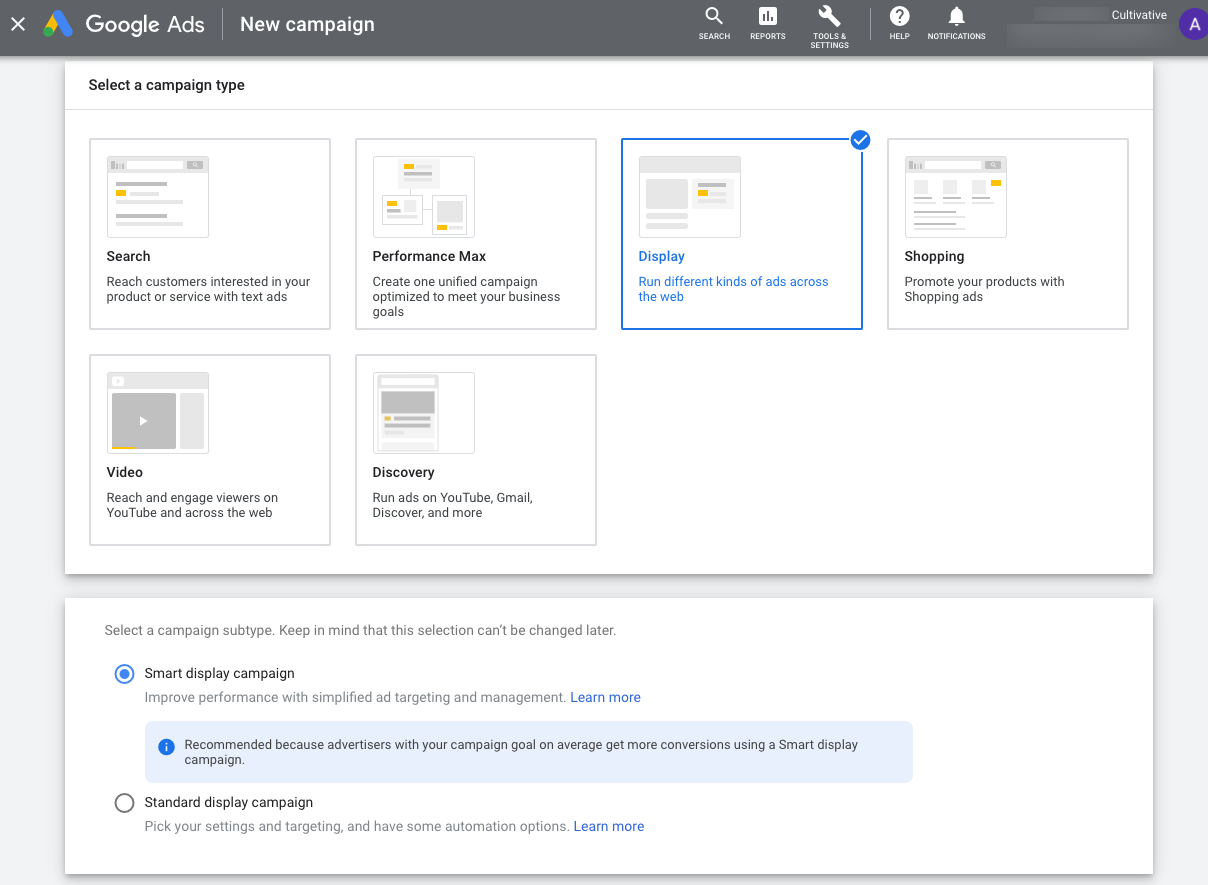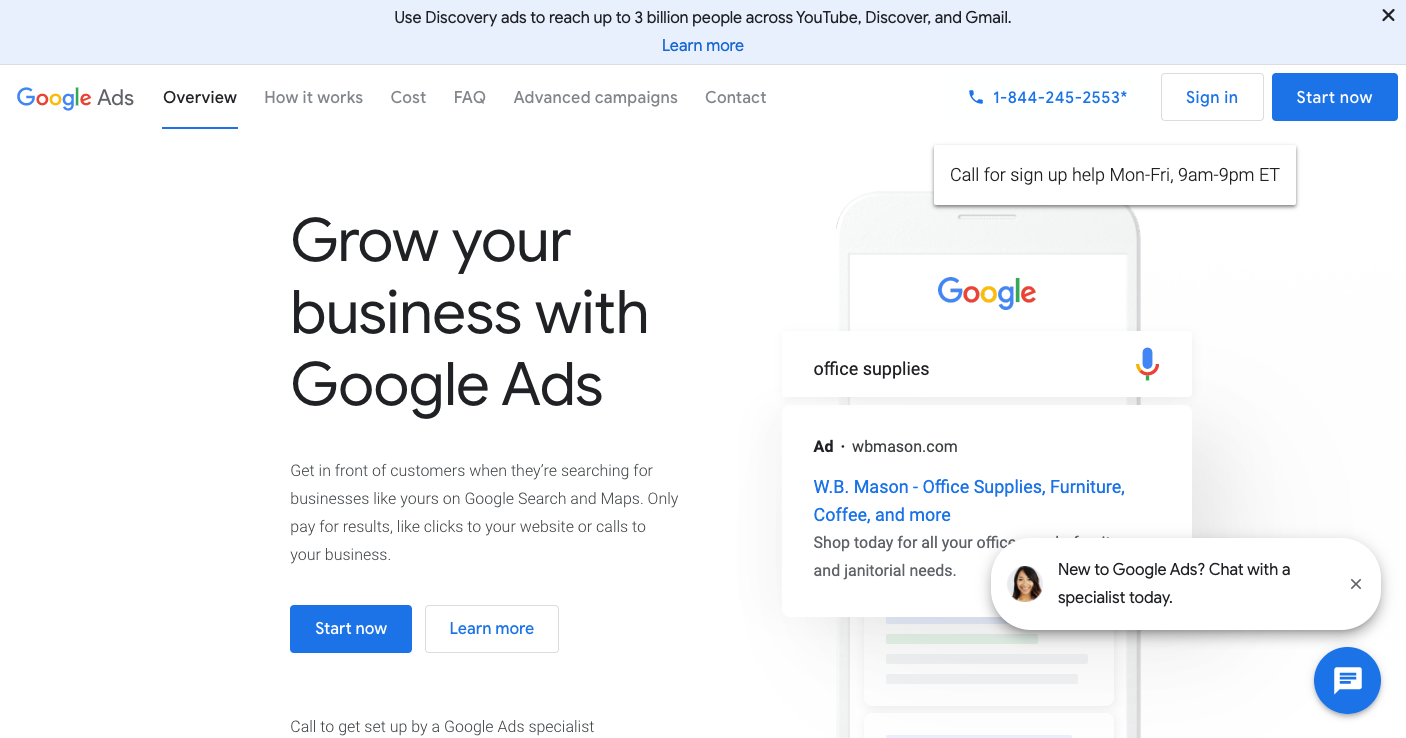Google Ads announced that it will consolidate Smart display and Standard display campaign options.
What’s Changing For Advertisers?
Google’s announcement notes that advertisers will still be able to use manual or automated solutions, but the option will now be available within one campaign type.
At the time of campaign creation, advertisers will be able to choose between an automatic or customized experience.

This change seems to be similar to that of the recent change in bidding strategies, where the feature functionality still exists, though, the setup process in Google Ads is changing. That said, theoretically, advertisers shouldn’t notice much difference in performance.
What Do Advertisers Need to Do?
According to Google’s Ads Liaison, Ginny Marvin, no action is needed. Existing Smart and Standard display campaigns won’t be affected at this time.
How Did We Get Here? The Evolution of Display & Smart Display
Google Ads released Smart Display campaigns in 2017, to allow advertisers to take advantage of a fully automated display experience.
Since then, they’ve also introduced additional automated solutions within Standard display campaigns; in 2018, for instance, responsive display ads were rolled out as the new default display format. Advertisers leveraging both responsive display ads as well as other static ads have probably noticed that responsive display ads receive far more visibility.
Later in 2018, Google also announced the ability to use the “pay for conversions” option within display, allowing advertisers with enough conversion data to use automated bidding with lower risk since they would only pay when conversions were received.
More recently, in June of this year, Google rolled out “Optimized Targeting” – a sister to the “Targeting Expansion” option within display. Both are features that help advertisers expand their reach within display but the difference is nuanced.
Targeting expansion would only expand upon the audiences given in any campaign, while respecting the bounds of targeting settings. Optimized targeting goes one step further and isn’t relegated to expanding only upon the specific targeted audiences but rather can expand fluidly in any area of targeting, such as demographics, for instance, to drive more of the intended action. For example, if you were specifically targeting 25-35 year-olds but the system identified that there were other age ranges likely to take the intended action, with optimized targeting turned on, the campaign could begin delivering to those audiences.
All that to say, because there are now so many automated features available within display, presumably, there’s enough overlap between Smart display campaigns and Standard display campaigns, that it made sense to streamline the campaign creation process by pulling both options under one roof.





